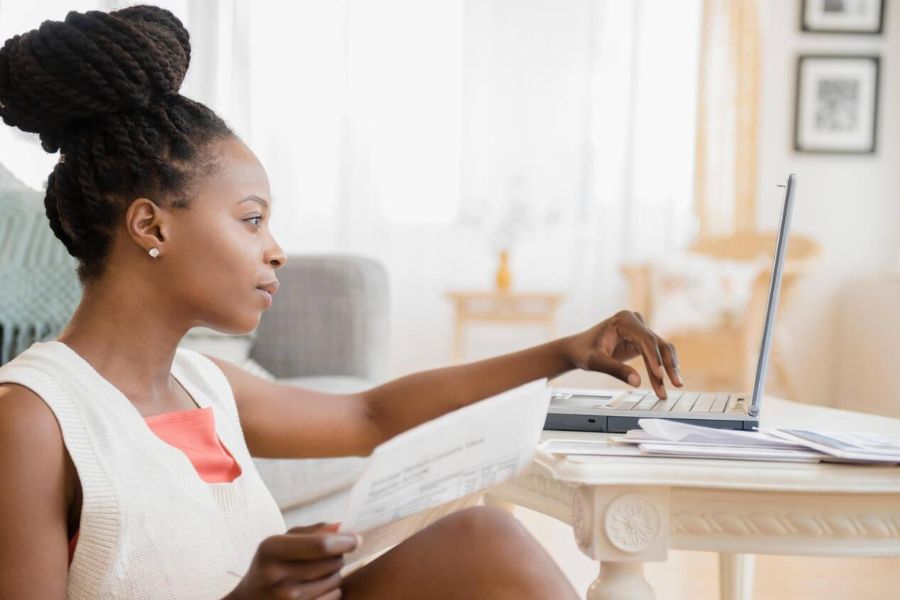Budgeting apps promise to solve money problems with fancy features and constant notifications. After trying several popular apps like Mint and YNAB, I felt more stressed about money than ever. The constant alerts and complicated categories overwhelmed me. Instead of moving closer to my financial goals, I felt stuck.
Most budgeting apps only track spending after the money is gone. They don’t help you decide where your money should go before you spend it. These apps also ignore the real root of money struggles: your mindset and relationship with money. No amount of spending alerts can fix emotional spending or help you understand your financial choices.

So, I ditched the apps. I built a simple system focused on planning my money in advance. Now, I tell every dollar where to go before my paycheck arrives. This shift from tracking to planning changed my financial life, and I want to show you how to do the same.
Key Takeaways
- Budgeting apps track past spending instead of helping you plan ahead.
- A pen-and-paper or spreadsheet system often works better than complicated apps.
- Changing your money mindset matters more than finding the perfect tool.
Why I Moved Away From Budgeting Apps
After years of trying different apps, I realized they created more problems than they solved. The technology that promised to simplify my finances made budgeting more complicated and stressful.
Limitations of Popular Budgeting Apps
I started with Mint because everyone recommended it. The app miscategorized my transactions constantly. My coffee shop purchases showed up as gas stations. Grocery store trips got labeled as restaurants.
I spent hours each week fixing these errors. Delayed account syncing and missing transactions made things worse. Credit Karma had similar issues. The budgeting feature tracked basics but missed important spending patterns.
Cash transactions were nearly impossible to track. This left big gaps in my spending data. Many apps required linking all my accounts, which made me uneasy about security. I worried about data breaches and privacy.
The Downside of Automated Money Management
Automated budgeting made me pay less attention to my daily spending. I started relying on technology instead of building good habits. The apps gave me a false sense of control. I thought everything was handled, but my real spending problems slipped through the cracks.
I became less accountable for my choices. When the technology failed, I had no backup plan. Notifications became annoying and easy to ignore. Important financial warnings blended in with noise.

My understanding of where my money went each month got worse. I lost track of my finances.
Emotional Impact of Budgeting Tools
The apps made budgeting feel like punishment. Every notification felt like criticism about my spending. I dreaded opening the apps. Seeing red numbers and overspending alerts created anxiety.
Stress and guilt piled up. I started avoiding my finances altogether. The apps focused on restrictions instead of helping me plan for what I wanted. Managing my budget became a chore. I missed the satisfaction of actively managing my own financial decisions. The human element disappeared.
What I Do Instead: Proactive Money Management Strategies
Instead of tracking past expenses, I started planning my money before I spent it. I use three main approaches: forecasting, manual tracking, and building automatic systems.
How Forecasting Transformed My Finances
Forecasting changed how I think about money. I plan where my money will go before I even earn it. Each month, I write out my expected income. Then, I assign every dollar to a specific purpose. I cover rent, groceries, savings, and even fun money.

My monthly forecasting process looks like this:
- List all expected income sources.
- Assign money to fixed expenses first.
- Set aside savings amounts second.
- Plan variable spending last.
This helps me answer questions like: How long could I survive without income? Am I saving enough for retirement? Will I have enough for a vacation? I also forecast bigger goals. For example, I calculate how much I need to save each month to buy a house in three years.
Instead of reacting to what already happened, I use proactive planning to control what will happen.
Manual Tracking Versus App-Based Approaches
I switched to a simple spreadsheet and notebook. Manual tracking takes a little more time but gives me better control.Writing down transactions helps me remember them. I don’t pay monthly fees or worry about privacy.
I can customize everything to fit my needs. No internet connection is required. My system is simple. I write down expenses in a notebook during the day. Every few days, I enter them into a basic spreadsheet. The spreadsheet has three sections: income, expenses, and savings. I can see my net worth, monthly cash flow, and progress toward goals in one place.
Manual tracking helps me plan future money moves and track progress toward specific goals.
Building Systems for Saving and Spending
I set up automatic systems to handle my finances without daily decisions. These systems prevent overspending and make saving effortless.

Here’s how I automate my savings:
- 20% of income goes to savings on payday.
- Another 10% goes to investments automatically.
- My emergency fund gets $200 every month.
- Fun money gets a set amount each week.
For spending, I use “bucket money management.” I keep separate accounts for different purposes. Rent money sits in one account. Grocery money goes in another. Fun money has its own spot. This keeps me from spending grocery money on entertainment. Each dollar has a job and stays in its place.
I also track my net worth every month. I total my assets and subtract my debts. This number matters more than daily expense tracking because it shows real financial progress.
These systems work because I set them up once and let them run. My finances stay on track without constant effort.
The Real Results: From Debt to Financial Confidence
Moving away from budgeting apps changed my financial situation. I broke free from credit card debt and built better money habits.
Escaping the Cycle of Credit Card Debt
My credit card debt dropped by $8,400 in eight months after I stopped using budgeting apps.
Without the distraction of complex categories, I focused on one rule: I wrote down every dollar I spent right after each purchase.
This habit made me pause before buying. The act of writing stopped most impulse purchases.
Here’s what helped me reduce my debt:
- I stopped using credit cards for daily expenses.
- I paid cash for groceries and gas.
- I set up automatic payments above the minimum.
- I reviewed purchases weekly.
My credit score improved from 640 to 720. Consistent payments and lower balances repaired years of poor credit management.
Improving Accountability and Awareness
Writing down expenses by hand created instant awareness. I couldn’t ignore purchases when I had to record them. My notebook revealed spending patterns the apps missed. I found I was spending $200 a month on small, uncategorized purchases.
Accountability improved because I faced every financial decision in real time. This led to better choices throughout the day. I started asking, “Is this purchase necessary?” before reaching for my wallet.

The personal connection to my money grew stronger without digital barriers.
Frequently Asked Questions
Many people wonder how to manage money without budgeting apps. Here are common questions and practical answers.
What alternative methods are people adopting instead of budgeting apps?
I switched to a simple notebook system. I write my paycheck amount at the top and list all bills in order of due date.
Many use basic spreadsheets for more control and fewer notifications.
Some people use the envelope method with cash. They put money for each expense in separate envelopes.
Others set up separate bank accounts for bills and spending money.
How can you effectively manage your finances without a budgeting app?
Set up automatic bill payments to avoid late fees.
Write down your income first. Then list every bill and expense.
Check your bank account once a week. Too much checking creates anxiety.
Keep receipts in a box or envelope. Review them monthly to spot patterns.
What are the main reasons behind users discontinuing the use of financial tracking apps?
Apps don’t fix unhealthy money mindsets. They just track numbers.
Constant notifications create stress. Alerts about every purchase made me worry more.
Some apps offer cash advances or payday loans, which encourage bad spending habits.
Apps provide information overload but don’t build real money skills.
Can managing finances manually improve financial awareness over app reliance?
Manual tracking makes you think about each expense. Writing down purchases increases awareness.
You learn to plan ahead instead of reacting to notifications. This builds better money habits.
Manual methods help you focus on your money mindset. Emotional spending patterns become easier to spot.
Writing things down slows you down and makes you think.
What tools or strategies can enhance personal finance if budgeting apps are not used?
A simple notebook costs less than $5 and can organize your whole month.
Set up a high-yield savings account that’s harder to access. This prevents impulse spending.
Use your bank’s automatic bill pay feature. This removes the stress of remembering due dates.
Read books about money psychology. I recommend “I Will Teach You to Be Rich” by Ramit Sethi for changing your money mindset.
Are there any long-term benefits of manual budgeting compared to using automated apps?
Manual budgeting helps you build real money skills. When you track every expense by hand, you start to notice patterns in your spending.
You can avoid subscription fees that many budgeting apps charge. Personally, I use a notebook, and it saves me money every month.
Manual tracking can reduce money anxiety. Without constant notifications from apps, I feel more in control and less stressed.
You develop stronger self-control with money. Writing things down makes you pause and think before making a purchase.


